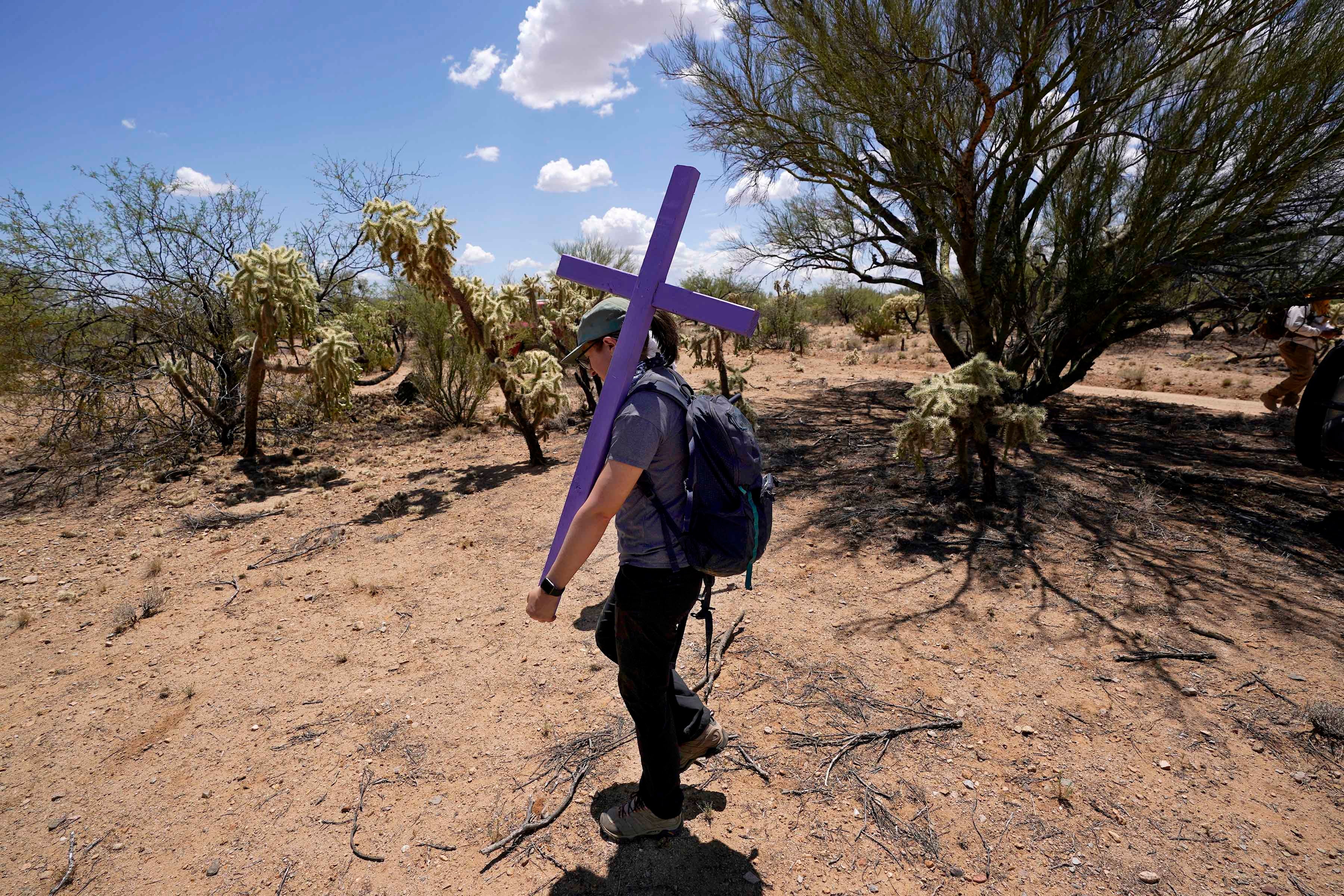US: Extreme Heat Should Prompt New Border Approach

(Washington, DC) – Extreme heat in the United States in the summer of 2021 underscores the urgency of adopting a climate-informed approach to policies affecting border communities, migrants, and asylum seekers, a group of 68 rights organizations said today in a letter to the Biden administration.
The groups include Human Rights Watch, the Natural Resources Defense Council, the Southern Border Communities Coalition, the American Friends Service Committee, Amnesty International USA, and dozens of others.
The “prevention through deterrence” approach to immigration limits the entry of asylum seekers and migrants at ports of entry, denies them access to the asylum system, and concentrates enforcement in populated areas to force border-crossers into other areas where thousands have died due to dangers that include extreme heat. “Considering the likelihood of increasingly extreme temperatures at the border, the Biden administration should move away from deterrence and ‘Do Not Come’ messaging, which ignores the realities for people fleeing for their lives and their right to seek safety,” said Clara Long, associate US director at Human Rights Watch. “Instead, the US strategy to address migration on a warming planet should be rooted in human rights and humanitarian protection.” In late August, US Customs and Border Protection agents found a two-year-old boy alive next to the bodies of his mother and 10-year old sister in the desert west of Yuma, Arizona.
The high temperature on that day was 119 degrees.
The Yuma County medical examiner determined that their deaths were heat-related. “Extreme heat is already a deadly threat to migrants and border communities," said Juanita Constible, senior advocate for climate and health at the Natural Resources Defense Council. “Because of the existing concentration of climate-warming pollution in the atmosphere, this threat will grow even if the world ambitiously and urgently acts to limit further emissions. Border policies should safeguard vulnerable populations from extreme heat, not put them more firmly in harm's way." In the past year, the death toll as measured by the number of human remains recovered has been on the rise, the organizations said. In Arizona, the nonprofit, Humane Borders, and the Pima County Medical Examiner’s office found the remains of 43 migrants in June, and the remains of a total of 127 people during the first half of 2021, an increase over the 96 at the same point in 2020.
The Brooks County Sheriff’s Department in Texas reported 50 migrant deaths in the first six months of 2021, more than in all of last year. In the Big Bend area of Texas alone, 32 migrants have died already, more than 4 times the number in the previous fiscal year, which ends on September 30. And in the eastern California deserts, 31 border crossers have lost their lives since October 2020. “The people impacted by border policies that force people to cross through rough terrain are not only new arrivals, but also people deported from the United States without proper consideration of their deep ties to home and family, who are seeking to reunite with family,” said Denise Bell, researcher for refugee and migrant rights at Amnesty International USA. “Instead of ensuring effective humanitarian reception and response, the US has failed to decriminalize or formally deprioritize from prosecutions life-saving humanitarian activities.” The Southwest is one of the fastest warming regions of the United States as the climate changes. Heat waves have grown longer, more intense, and more frequent in the region and nationwide. Even with moderate action to reduce greenhouse gas emissions, the US counties along the Mexico border could see an annual average of 60 days with a heat index above 100 degrees Fahrenheit in just a few decades, up from 28 days from 1971 to 2000, according to data released by the Union of Concerned Scientists. “Inadequate responses to extreme heat also affect border communities, including people who cross the border regularly for work, school, and visits with family and friends,” said Vicki Gaubeca, director of the Southern Border Communities Coalition. “We need a new way to manage our borders, a humanitarian response that welcomes both migrants seeking safety and border community members at our ports of entry. Doing so will save thousands of lives. Responses to extreme heat in the border region, including access to humanitarian shelters and water, should be nondiscriminatory and accessible regardless of migration status.” “‘Prevention through deterrence’ has never achieved prevention,” said Pedro Rios, director of the American Friends Service Committee's U.S./Mexico Border Program. “The policy has never stopped migration. It has only exacerbated conditions that lead to death, and that is a tragic policy failure.”.
Read the full article at the original website
References:
- https://www.hrw.org/united-states
- https://www.hrw.org/news/2021/09/15/groups-urge-biden-administration-plan-extreme-heat-us-border-policies-abandon
- https://www.hrw.org/about/people/clara-long
- http://www.tucsonsentinel.com/local/report/090221_migrant_death_boy/2-year-old-boy-found-alive-next-his-migrant-mothers-dead-body-near-yuma/
- https://www.theguardian.com/us-news/2021/jul/12/us-immigration-bodies-heat-arizona
- https://www.kiiitv.com/article/news/local/immigrant-bodies-found-in-brooks-county/503-e94c3d8b-6089-4071-97e9-a3bb1bb1f58c
- https://www.borderreport.com/hot-topics/immigration/border-patrol-deploys-rescue-beacons-in-wake-of-32-migrant-deaths-in-big-bend-region-of-texas/
- https://www.borderreport.com/regions/california/border-patrol-reports-31-migrant-deaths-so-far-this-year-in-california-wilderness/
- https://www.wrh.noaa.gov/twc/climate/monthly/2020.php
